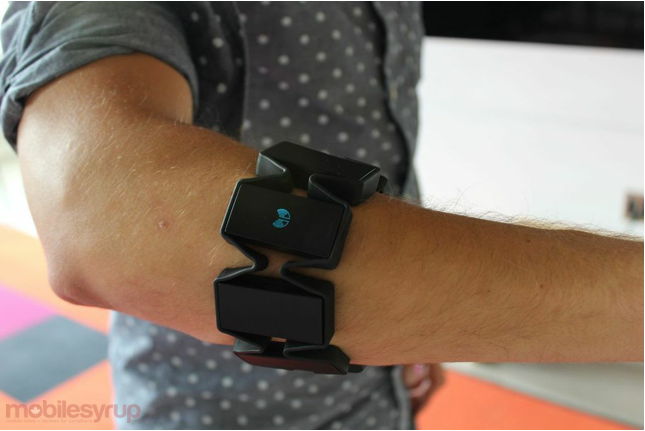
Thalmic Lab’s Myo is one of the most anticipated wearables of the year. The armband has set some hefty expectations of making “Minority Report-style” arm gesture experiences a reality. The time has finally come to see if the Kitchener startup can deliver as they begin to ship the production units of Myo out to the developer community by the end of the month. We visited Thalmic in their swanky new office on Charles Street to get a hands-on demo to see if this wearable is worthy of all the hype.
The quick answer is yes, it sure is. But there are still some tweaks to work out before the device hits the market.
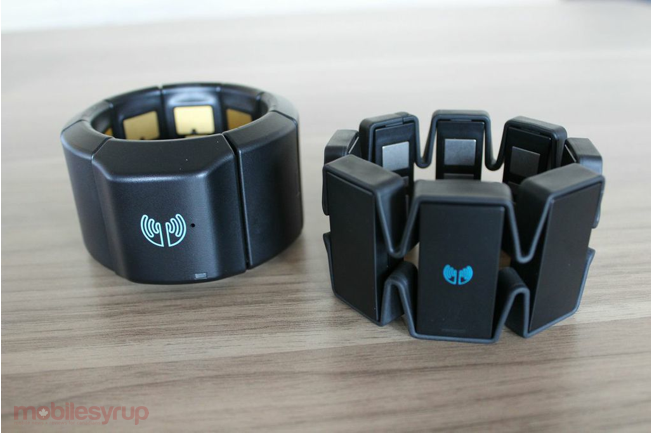
And working out the tweaks is exactly why Thalmic has wisely chosen to go out early with its production unit to the developer community rather than rushing straight to a consumer release. “We want to take our time and make sure that we spend time with the developers now to get the user experience right and don’t rush too soon to the general consumer, which is a mistake that we have seen before with new technologies,” Thalmic Labs co-founder and CEO Stephen Lake told MobileSyrup. “The adoption of new technology, especially one like ours, requires applications and software and different people to work with us. It’s important that the developers are engaged and part of the process and so we have chosen to focus on them first.”
Thalmic has already used the feedback they have been collecting from developers with early versions of the Myo to make some drastic changes on the hardware side. The final production band sports a new futuristic look right out a sci-fi movie; Lake told us that the new design was created for early adopters. This group is just as interested in how the Myo works as what is does and so decisions like making the sensors visible from inside the armband were made with them in mind.
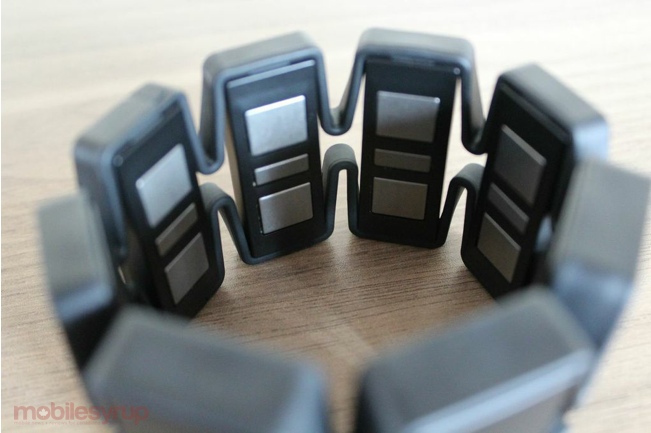
In comparing the production unit with the earlier version we saw at CES earlier this year, it’s hard to believe they’re from the same company. The bulky, plastic, toy-like cuff is now a light, semi-flexible armband that has a much thinner and sleeker profile. The final Myo is one piece that stretches to fit different arm types, a major design goal for Thalmic. Many wearables come with different bands, or require you to choose a size when ordering and this is something the company wanted to avoid. “We wanted it so that if you were to buy Myo and your friend wanted to try it on they could and you wouldn’t have to to well I have the medium size and you need the large,” explained Lake.
We asked Lake if he thought users would be wearing the Myo as an all-day device. He told us, “In the early days it will be application specific. You will put it on to control a presentation or play a game. We are not yet at the point where you are going to be wearing it around all day. At some point in the future we might get there, as more and more applications emerge and we start getting into integration with smart home technology and other connected things around you. It’s not a fitness tracker. It’s not something you need to wear all day. It’s content specific.”
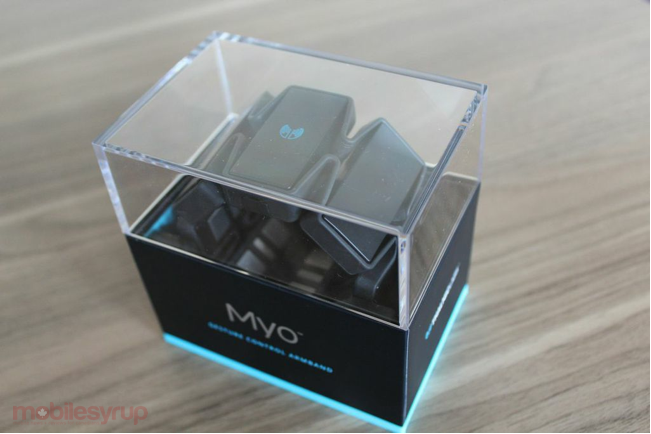
Lake confirmed that the hardware we saw is the version that will be rolled out in Thalmic’s consumer release six weeks after the developer shipments begin, likely sometime in September. But they do expect to make software tweaks based on developer feedback. Thalmic has already made some huge advances in its algorithms and setup process from alpha testers, such as eliminating the need for calibration upon initial setup.
A user’s first experience with Myo right out of the box was a particular focus for Thalmic. The team spent some significant time figuring out what level of education is necessary to ensure a positive out-of-box experience. The result is a two-minute video tutorial users are walked through when they install the Myo client on their PC or Mac. The tutorial is controlled using the six Myo gestures so its not just informational but hands-on.
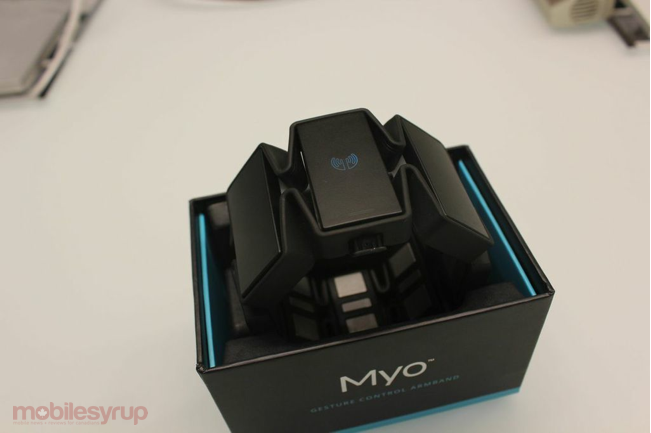
As part of our hands-on experience with Myo, we had a chance to walk through the tutorial and were able to get most of the gestures to work on the first try without much effort. For some reason, the “fist and turn” gesture, used to turn up the temperature on a virtual smart thermostat in the tutorial, needed a lot more tries, so there’s still work to be done.
In using Myo with apps like VLC, we were pretty impressed by how responsive the gestures were in controlling things like stopping or scrubbing video. Once you get used to using the pinky-to-thumb unlock gesture, necessary for each gesture to trigger an action, the Myo is easy to use and natural-feeling. In fact, minus the single frustration we encountered, the hardest thing about our Myo demo was getting it out of the packaging.
Outside of refining the software user experience, Thalmic will be using this time with the developers to grow the app ecosystem in prep for the launch of the Myo App Market, which will occur with the consumer release. You can expect apps for Sphero, the robotic ball, and the Parrot AR drone to be some of those featured in the Market. But if the developer YouTube videos we’ve seen are any indication of what the developer community is capable of, drones and robots are just the start.
Welcome to the future.
MobileSyrup may earn a commission from purchases made via our links, which helps fund the journalism we provide free on our website. These links do not influence our editorial content. Support us here.


